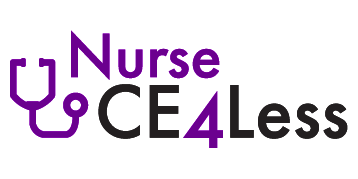Course Summary
The identification and prevention of medical errors requires the participation of all members of the health team, including patients. The traditional way of coping with medical errors was to assume errors were the result of individual mistakes such as carelessness and inattention, creating a culture of blame. However, it has become clear this approach is not optimal. It does not address the root causes of medical errors or systemic problems. It discourages disclosure of errors, and without disclosure, errors cannot be reduced. Enhancing health team knowledge and the environment of care will help to reduce the risk of a medical error and promote patient safety.
Course Format
Homestudy
Course Syllabus
- I. Introduction
- II. Medical Errors and the Scope of the Problem
- III. Prevalence of Medical Errors
- IV. Defining Medical Errors
- 1. Medical Error
- 2. Adverse Event
- 3. Near Miss
- V. Types of Medical Errors
- 1. Diagnostic Errors
- 2. Patient Falls in Healthcare
- 3. Laboratory Errors
- 4. Medication Errors
- 5. Surgical Errors
- VI. Causes of Medical Errors
- 1. Poor Communication
- 2. Lack of Knowledge
- 3. High-Risk Healthcare Settings
- 4. Causes of Adverse Events During Surgery
- 5. Time Constraints and Patient-dependent Factors
- 6. Root Cause: Human and System Factors
- VII. Preventing Medical Errors
- 1. Preventing Diagnostic Errors and Cognitive Mistakes
- 2. Preventing Falls
- 3. Preventing Laboratory Errors
- 4. Preventing Medication Errors
- 5. Preventing Surgical Errors
- 6. Interprofessional Approach to Reduce Medical Errors
- 7. Using Root Cause Analysis to Reduce Errors
- 8. Using Patient Education to Reduce Errors
- VIII. Reporting and Disclosure of Medical Errors
- 1. Barriers to Reporting Medical Errors
- 2. Disclosing Medical Errors to the Patient
- IX. Case Studies: Medication Errors
- 1. Case 1: Wrongful administration of epinephrine
- 2. Case 2: Accidental administration of insulin
- X. Summary
Authors
Noah H. Carpenter, MD
Dr. Noah Carpenter is a Thoracic and Peripheral Vascular Surgeon. He completed his Bachelor of Science in chemistry and medical school and training at the University of Manitoba. Dr. Carpenter completed surgical residency and fellowship at the University of Edmonton and Affiliated Hospitals in Edmonton, Alberta, and an additional Adult Cardiovascular and Thoracic Surgery fellowship at the University of Edinburgh, Scotland. He has specialized in microsurgical techniques, vascular endoscopy, laser and laparoscopic surgery in Brandon, Manitoba and Vancouver, British Columbia, Canada and in Colorado, Texas, and California. Dr. Carpenter has an Honorary Doctorate of Law from the University of Calgary, and was appointed a Citizen Ambassador to China, and has served as a member of the Indigenous Physicians Association of Canada, the Canadian College of Health Service Executives, the Science Institute of the Northwest Territories, Canada Science Council, and the International Society of Endovascular Surgeons, among others. He has been an inspiration to youth, motivating them to understand the importance of achieving higher education.
Dana Bartlett, RN, BSN, MSN, MA, CSPI
Dana Bartlett is a professional nurse and author. His clinical experience includes 16 years of ICU and ER experience and over 27 years as a poison control center information specialist. Dana has published numerous CE and journal articles, written NCLEX material, textbook chapters, and more than 100 online CE articles, and done editing and reviewing for publishers such as Elsevier, Lippincott, and Thieme. He has written widely on the subject of toxicology and was a contributing editor, toxicology section, for Critical Care Nurse journal. He is currently employed at the Connecticut Poison Control Center. He lives in Wappingers Falls, NY.


